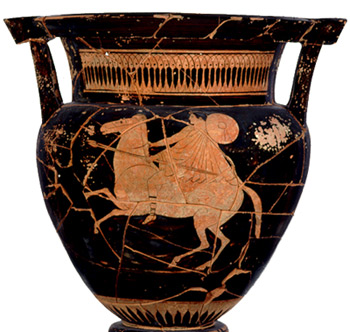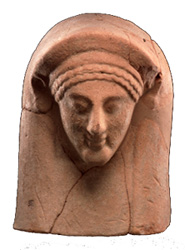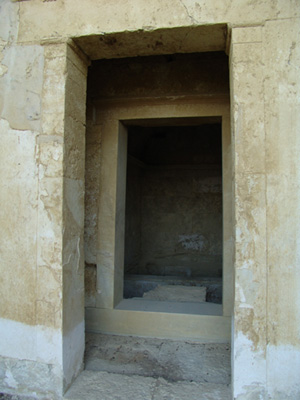The necropolis of Argilos is situated to the East of the city. There are various types of tombs. Most are cist-graves, that is, trenches, of which the sides are clad with marble slabs and the top is covered with terracotta tiles, but clay sarcophagoi or simple pits next to a cremation area also occur. The offerings reflect the needs of the inhabitants; in the tombs, vases were deposited coming from areas as far as East Greece, Corinth, Athens, and naturally Thasos, showing the intensity of relations with the rest of the greek world.

Attic red-figured krater (500-450 B.C.)
The necropolis of Argilos also contains two macedonian tombs, nowadays visible next to the Thessaloniki – Kavala national road. They were built by digging into the soft earth of the slope of a small hill. Of tomb A, only part of the corridor (dromos) and entrance to the chamber are preserved. Tomb B is in a much better state of preservation. The dromos which leads to the entrance is 5 meters wide, the entrance itself is built with two marble posts and the lintel has five dentils. Both anti-chamber and chamber are preserved. A marble door separated the anti-chamber from the chamber, but neither a kline nor thronos was found. The corpses were placed in three cist-graves dug under the floor of the chamber. Coins of Cassander and Antigonos Gonatas date tomb B to the 3rd century B.C.

Archaic protome from the necropolis

Macedonian tomb “A” – Dromos and entrance to the chamber

Macedonian tomb “B” – Dromos and entrance to the chamber

Macedonian tomb “B” – anti-chamber and chamber

Tombe B – Antichambre et chambre


